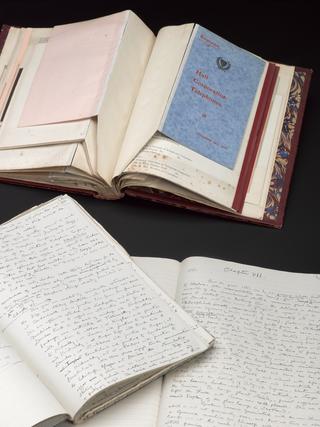
Bennett, Alfred Rosling 1850 - 1928
1850–1928, electrical engineer, British, English
More
Alfred Rosling Bennett was born on 14 May 1850 in Islington, London, the son of John Richard Bennett. He had at least one brother. He was educated at a private school, and later at the Bellevue Academy, Greenwich. His original leanings were towards railway engineering, and he maintained an interest in the subject all his life, but his first appointment in 1869 was to the Indian government telegraph department in Karachi, on whose behalf he visited Baluchistan, Mesopotamia, and Turkey, receiving special mention for his proficiency in the testing of land line and submarine cables.
In 1873 he returned to England and became electrician to the Highton Battery Company, which worked the battery and other patents of the Revd Henry Highton. In 1877, only two years after Alexander Graham Bell had invented the telephone, Bennett set up the first experimental overhead telephone line in England, linking the Queen's Theatre in Long Acre and the Canterbury Music Hall, in London, for a demonstration of Varley's musical telephone. Soon afterwards, he engaged in research which resulted in his filing patents for the telephonic translator (1880), the caustic alkali and iron battery (1881), and a telephone transformer (1881).
Bennett entered the service of the National Telephone Company in 1883, becoming general manager and chief engineer for Scotland and north-west England from 1886 to 1890. During this time he was responsible for the installation of the first incandescent lamps in Scotland, and the first electric lighting in a coal mine, near Hamilton. After short periods as general manager and chief engineer of the Mutual and the New Telephone companies he set up in practice in 1893 as a consulting telephone and telegraph engineer, in which capacity he acted as consulting engineer to the telephone departments of Guernsey (1896–1921) and Glasgow (1900–04), as well as Portsmouth, Hull, Brighton, and Swansea (1900–11). He was the originator of, and vice-chairman of the executive council for, the Edinburgh International Electrical and Engineering Exhibition of 1890. His last work was the reorganization of the telephone system in Malta. From 1891 on, Bennett published books and papers on both telephony and railways. He was a member of the Institution of Electrical Engineers and a vice-president of the Institution of Locomotive Engineers.
Bennett was unmarried. He spent the winter of 1927–8 in Malta, and had only been back in England for a few days when he succumbed to bronchitis and died on 24 May 1928, at Smedley's Hydropathic Establishment, Matlock, Derbyshire. He was buried at Darley Dale cemetery, Matlock. His obituarist in Locomotive noted that ‘death brought to a close an interesting and useful life’. Bennett was known for his remarkable energy, great sincerity, and charm, and was always ready to acknowledge merit in others. H. W. D., obituarist, writing in the Transactions of the Newcomen Society (Bennett had been a member since 1921), commented on his remarkable memory, and described him as ‘a man of genial breezy temperament, a strong individualist, and one who made friends wherever he went.’
Bennett's published works include:
'Electric Traction' (Edinburgh, 1889) [short paper]
'The Telephone Systems of the Continent of Europe' (London, 1895, reprinted by Arno Press, 1974)
'On the Telephoning of Great Cities' (London, 1895) [short paper]
'The First Railway in London [the London & Greenwich Railway' (London, 1912)
'London and Londoners in the Eighteen-fifties and Sixties' (London, 1924)
'History of the States of Guernsey Telephone System' (London, 1926)
'The Chronicles of Boulton’s Sidings' (London, 1927)